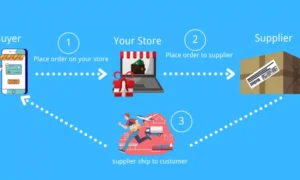Introduction
Have you ever felt that doctors spend more time typing on a computer than talking to patients? If so, you are not alone. In today’s healthcare system, paperwork and documentation consume a large part of the clinical day. This is where AI scribes step in. They are designed to handle the heavy burden of medical note-taking so that health professionals can refocus on what matters most: patients.
In this article, we will explore how AI-driven documentation is reshaping healthcare and why it is considered a breakthrough for the industry.
The Burden of Administrative Tasks
One of the biggest frustrations for health professionals is the overwhelming number of administrative responsibilities. It’s known that doctors spend about half of their working hours on documentation instead of direct patient care. Writing notes, updating records, and ensuring accuracy not only takes time away from physicians but also leaves patients feeling rushed during appointments.
AI scribes provide a practical solution. By listening to a doctor’s conversation and converting it into accurate notes automatically, they cut down documentation time dramatically. For example, research reveals that AI scribes can reduce documentation time by up to 70%, giving doctors more space to diagnose, treat, and build stronger relationships with their patients.
Enhancing Patient Experience
Healthcare is not just about treatment; it is also about the relationship between doctor and patient. When physicians are buried in laptops or scribbling notes, patients often feel ignored. This lack of personal attention can weaken trust and reduce satisfaction.
By using AI scribes, doctors can give their full attention to the patient in front of them. Instead of worrying about typing, they can listen carefully, maintain eye contact, and provide more compassionate care. Many physicians report feeling more “connected” with their patients, as they no longer have to juggle note-taking during conversations. Patients notice this too: when their doctor is fully present, the experience feels more personal and supportive.
Improving Accuracy and Efficiency
Medical records should be accurate. A small error in documentation can lead to serious consequences, from incorrect diagnosis to inappropriate treatment. Traditional manual note-taking is prone to mistakes, especially when doctors are seeing dozens of patients a day.
AI script significantly improves both accuracy and efficiency. They capture medical details in real time and ensure that records are complete and up to date. In fact, AI scribes can reduce documentation errors by up to 90%. This leads to safer patient outcomes, smoother communication among care teams, and stronger trust in the healthcare system.
The Future of AI Scribes in Healthcare
Today’s AI scribes already handle the bulk of documentation, but the next generation will go even further. Imagine an AI scribe that integrates directly with electronic health records (EHRs), suggests treatment options, or even applies predictive analytics to identify potential risks before they become serious.
As AI becomes more advanced, its role in healthcare will extend beyond documentation. It will serve as a reliable assistant that not only reduces administrative burden but also supports better decision-making for doctors and nurses.
Conclusion
The impact of AI scribes on healthcare is nothing short of transformative. By reducing the administrative load, they give doctors more time with patients. By enhancing patient experience, they restore the human side of medicine. And by improving accuracy and efficiency, they ensure safer, more reliable care.
In short, AI scribes are not just another tool—they represent the future of healthcare. For professionals who want to spend less time on paperwork and more time building meaningful connections with patients, AI scribes are an opportunity worth embracing.


































